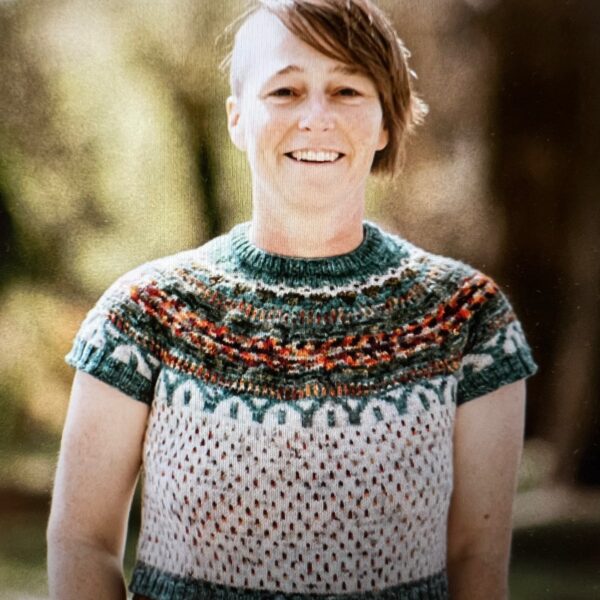Nickela Anderson is a passionate advocate committed to strengthening public education across Edmonton’s Ward D. With a vision rooted in equity and community, she launched her campaign for Ward D Trustee with strong grassroots support. She is dedicated to representing students, families, and communities across the ward—spanning both sides of the North Saskatchewan River and comprising 35 diverse neighborhoods.
For more than a decade, Nickela has been deeply involved in education through school councils and parent associations, while raising her three children in the Edmonton Public system. Professionally, she brings expertise in opinion research, program and leadership evaluation, and public engagement—experience that equips her to listen, lead, and make informed decisions on behalf of the community.
Nickela believes in inclusive, accessible schools that reflect the diversity of the ward and in upholding Truth and Reconciliation by honoring Treaty 6 territory and the histories of Indigenous Peoples whose communities enrich the region.
Statement of beliefs
Public education is the cornerstone of thriving communities. I believe it must be equitable, inclusive, and adequately funded to ensure every child—regardless of background, ability, or status—has the opportunity to learn, belong, and succeed.
Education is a collective responsibility: while the Alberta government has the primary duty to fund schools, families, educators, and communities all play vital roles in supporting them. Public schools serve not only students but also families, educators, and society as a whole, providing safe, connected spaces that shape our collective future. That is why I strongly oppose diverting public funds to private and charter schools. Education is a human right that must remain universally accessible and well-supported within the public system.
True safety in schools comes from relationships, respect, and inclusion. Students and staff must feel safe to learn, teach, and grow. I will be a strong, loud voice for change and for protecting all students and staff from harmful policies, underfunding, and inequitable practices.
Public education should empower all students to engage critically, live healthily, and contribute with empathy in a complex and changing world. As trustee, I will not be silent.
Priority areas
Equitable Funding – Ensure stable, adequate, and fair funding for all schools.
Inclusive Learning – Support diversity, complex needs, and newcomer students.
Student Well-Being – Prioritize mental health, safety, and belonging in schools.
Views on funding
Education funding in Alberta is the responsibility of the provincial government, and right now our schools are under immense pressure due to chronic underfunding and rapidly increasing enrolment. When funding does not keep pace with inflation, population growth, or the diverse and complex needs of students, it creates inequities that are felt in classrooms every day. Public education should be funded fairly and sustainably so that every child, regardless of background, has the resources and supports to succeed. School boards do not set funding levels, but they play an essential role in ensuring resources are allocated equitably, transparently, and in ways that best reflect local needs. Boards also have a responsibility to advocate strongly to government for adequate funding and to speak up about the realities facing students, staff, and families. Their role is not just administrative—it is about safeguarding equity and ensuring that public education remains accessible to all.
How learning conditions can be improved
Learning conditions improve when schools are safe, inclusive, and properly resourced. That means reducing class sizes so teachers can give students the attention they need, and ensuring every school has access to specialists, supports for diverse learners, and spaces that are clean and welcoming. Equity is key—resources must go where needs are greatest, so students with complex needs, newcomers, and historically marginalized groups are not left behind. Learning conditions also depend on respecting and supporting staff: when educators and support workers are valued, fairly compensated, and listened to, students benefit. Finally, learning environments must reflect the diversity of our communities—embedding Indigenous histories and perspectives, ensuring accessibility, and fostering belonging. Strong public funding, inclusion, and respect are the foundation for conditions where every student can thrive.
How trustees and school boards can best support teachers
Trustees and school boards best support teachers by ensuring they have the resources, respect, and working conditions needed to do their jobs well. This begins with advocating for adequate and sustainable funding so that class sizes are reasonable, supports for diverse learners are in place, and teachers are not stretched beyond capacity. Boards should prioritize mental health and well-being initiatives for staff, recognize the professional expertise of educators in decision-making, and create collaborative channels where teacher voices meaningfully shape policies and practices. Supporting teachers also means investing in ongoing professional learning, mentorship, and culturally responsive training so they can meet the needs of today’s students. Finally, trustees must champion fair compensation and safe workplaces. When teachers are supported and valued, students thrive—and boards have a responsibility to ensure that conditions for both are strong and equitable.
Views on the new K-6 curriculum
The new K–6 curriculum raises significant concerns. Many components are not developmentally appropriate, asking too much of young learners while leaving too little space for curiosity, play, and critical thinking. Its heavy content load and narrow, Eurocentric framing fail to reflect Alberta’s diversity or fully integrate Indigenous histories and perspectives in meaningful ways. Teachers, families, and education experts have consistently raised red flags, yet the process has lacked the collaboration and transparency needed to build confidence. In addition, schools have not been provided with the resources, professional learning, or time to effectively implement such sweeping changes. A curriculum should prepare students for a complex, changing world by fostering creativity, problem solving, and inclusion. Alberta’s students deserve a curriculum built with educators, communities, and Indigenous partners at the table—one that is balanced, forward-looking, and responsive to their needs.

